And the effort is much appreciated! it's so precious!Not gonna lie probably put as much effort into finding that wedding dress as I did my own lol
we will have a tibbit on my boy albert at some point?
And the effort is much appreciated! it's so precious!Not gonna lie probably put as much effort into finding that wedding dress as I did my own lol
Excellent! Many would also say that his real life counterpart is… well an experince😈 oh, Patrick... Patrick's gonna be a very interesting read lol
That makes sense!It's a decent mix between royalty, nobility, and commoners, I'd said. For example - Richard married a princess, his brother the Prince of Wales married a commoner, and his brother the Duke of York and his sister the Princess Royal married nobles.
There's just a lot more royals around ITTL since we butterflied away some major wars and everything
How come Richard is Duke of Gloucester if his uncle Alfred (also Duke of Gloucester) is still alive at the time of Anne’s birth in 1995?HM Anne, The Queen of Sweden (born HRH Princess Anne Elizabeth Melita of Gloucester) was born on January 23, 1995 in Malta to Prince Richard, The Duke of Gloucester, the youngest son of the current King William V, and Princess Emma of Hesse.
... because I am stupid 😮💨 I'm sorry. I got my times messed up - I saw that Alfred was dead when the wedding rolled around and forgot how to math.How come Richard is Duke of Gloucester if his uncle Alfred (also Duke of Gloucester) is still alive at the time of Anne’s birth in 1995?
Don't worry girl. We're always happy to see more of you!... because I am stupid 😮💨 I'm sorry. I got my times messed up - I saw that Alfred was dead when the wedding rolled around and forgot how to math.
Richard is the Duke of Kent, Anne is Princess Anne of Kent, etc.
Not gonna lie probably put as much effort into finding that wedding dress as I did my own lol
Is this referencing Princess Joséphine Napoléonne de Beauharnais (1807–1876), wife of King Oscar I of Sweden, granddaughter of Empress Josephine via her son Eugène de Beauharnais, Duke of Leuchtenberg (1781–1824).the Cameo parure. Originally made for Empress Josephine of France, it was passed down to her daughter, another Josephine, who became the Queen of Sweden and Norway.
Although the male line of house Vasa became extinct in 1672, the current King of Sweden, Carl XVI Gustaf, is descended from Gustav I through his paternal great-grandmother, Victoria of Baden, a descendant of Gustav I's great-great-grandson Adolphus Frederick II, Duke of Mecklenburg-Strelitz.Hold up, how is Eric XV a descendant of Gustav Vasa when the House of Bernadotte replaced Vasa as the Swedish royal family?
See below!Hold up, how is Eric XV a descendant of Gustav Vasa when the House of Bernadotte replaced Vasa as the Swedish royal family?
Thank you! 😊Great update as always. The Swedish culture boom is an amazing addition to this world, you are creating.
Nope, it's Josephine de Beauharnais and a typo lolIs this referencing Princess Joséphine Napoléonne de Beauharnais (1807–1876), wife of King Oscar I of Sweden, granddaughter of Empress Josephine via her son Eugène de Beauharnais, Duke of Leuchtenberg (1781–1824).
Or is it an alternative daughter of Empress Josephine?
And, as I found out during my research for this tidbit, they are also descended from the House of Vasa via Josephine de Beauharnais, who was a great-great-great-great-great-great-granddaughter of Catherine of Sweden, the daughter Charles IX of Sweden, via her mom Auguste of Bavaria!Although the male line of house Vasa became extinct in 1672, the current King of Sweden, Carl XVI Gustaf, is descended from Gustav I through his paternal great-grandmother, Victoria of Baden, a descendant of Gustav I's great-great-grandson Adolphus Frederick II, Duke of Mecklenburg-Strelitz.
One of the reasons i LOVE the house of Bernadotte! Charles XIV had one of the best rags to riches stories ever! Plues they are descendats not only from the Vasas but also josephine, the tru love of napoleon!And, as I found out during my research for this tidbit, they are also descended from the House of Vasa via Josephine de Beauharnais, who was a great-great-great-great-great-great-granddaughter of Catherine of Sweden, the daughter Charles IX of Sweden, via her mom Auguste of Bavaria!
Excellent! Thanks for sharing this post!!!“Two records were broken and a third was honored in Sweden today when HM King Erik XV of Sweden married HRH Princess Anne of Kent, granddaughter of the current King of the United Kingdom of Great Britain and Ireland.
Earlier this year in June marked the 500-year anniversary of Gustav Vasa becoming the first King of an independent Sweden. Erik XV, a direct descendant of the King, is said to be an "avid historian" in his personal life and informed reporters that he and his bride are delighted to be able to have their own moment of history in the same year as this amazing anniversary for Sweden”. An original plan to hold the wedding on June 6th was apparently shelved in favor of the later date in order to allow the two events to each be celebrated ‘properly and with their own honor’.
This also marks the first marriage between a member of the Swedish and British royal houses since 1848, when Carl XV married the youngest daughter of Queen Charlotte of the United Kingdom*.
The Anglo-Swedish cultural rivalry so well known to us today began with Carl XVI Oscar, the son of the aforementioned union. Carl XVI had an extremely complicated relationship with his mother, which in turn led to a complicated relationship with the land of her birth. A cultured man, deeply interested in the arts and sciences, he was "mortally offended", as he wrote to a friend "to be considered born of a Great Culture by being born to a British mother and not a Swedish father. Far too long, since the days of Napoleon!, have we allowed Sweden to lag behind in terms of literature, art, sciences - no more, I say! My children shall know they are children of culture for being children of Sweden."
From the Renaissance to the Carolean era, the four languages of culture could be considered Italian, French, German, and English. In the mid to late nineteenth century, however, Swedish began to rise to its current prominent place, thanks largely in part to the efforts of Carl XVI. While considered strict and temperate in his administration of the economy and the military, he was passionate in funding the arts and sciences, considering himself the successor in these efforts to Gustav III and Queen Luise Ulrika. He helped create scholarships to entice students and educators to Swedish universities, invested his private income into Swedish galleries and publishing houses, and personally paid to send promising artists abroad to study and further their skills. He funded the building of the new Swedish Royal Opera House and personally paid for over twenty new operas and ballets to be written, composed, and performed by Swedish musicians, choreographers, singers, and ballerinas. Opera singer Jenny Lind, persuaded to return to Sweden after living abroad for years by Carl XVI’s efforts, wrote that “Heaven has sent an angel of music and art to Sweden, and his name is Carl Oscar”.
His efforts have not gone in vain. The Operan, the Swedish Royal Opera House, is consistently rated as one of the most beautiful in both architecture and productions in the world. The Royal Ballet is considered one of the five finest. Membership in the Royal Academies is a fiercely coveted honor in academics, and many scholars willingly live in Sweden for the required ten years or more just in hope of achieving such an honor. Swedish literature, while never to replace that of English, French, German, or Italian, has risen to stand among them in terms of popularity and regard - who does not know Hanne Blom, Andrea Vång, or Stieg Larsson? Schools in other countries now regularly offer Swedish as a second language course alongside German, French, and English, and it becoming a hallmark of a good education to at least be conversational in Swedish.
Carl XVI also fought to protect traditional Swedish culture as well, after a particular gaffe from the King of France, who stated that “Of course it is a Frenchman to bring them culture”, a reference to Carl XVI’s Bernadotte ancestry. Carl XVI and his family regularly wore traditional Swedish clothing, and his wife re-popularized the nationalla dratken style for major events at court (a tradition that continues to this day). He insisted on traditional Swedish cuisine at every meal and only Swedish scholars, governors, and nannies were allowed to care for his children. In family meetings, he was said to be quite put out whenever he was forced to speak anything but Swedish, and he refused to speak English at all, deeply offending his British relatives.
Eric XV is also the first Swedish monarch to marry while ruling since Carl XVI, who did not marry until he was thirty-two, which is attributed partially to his parents' own marriage. One can attribute the great place of Sweden and her culture at least partially to the last British-Swedish royal union, leaving us wondering what shall be born from this one."
*It has come to the attention of this author that in the original publishing that Carl XVI Oscar's mother was referred to as Queen Charlotte’s youngest daughter. This is incorrect, as she was actually her second youngest daughter.
--- "Thoughts on the Royal Marriage" by Jennifer Klasson for the Stockholm Times (Online Edition), October 26, 2023There is always a sartorial scuffle at royal weddings, as each royal bride tries to claim the Magpie Bride of the Year award (obviously). The royal house of Britain, in particular, is known for its dramatic bridal ensembles. And, my darlings, Princess - now Queen! - Anne, did not disappoint. In fact, I think we might just have to call it here and now - the new Queen Anne of Sweden is Magpie Bride of the Year.
~~~~~~~ ~~~~~~~ ~~~~~~~ ~~~~~~~ ~~~~~~~ ~~~~~~~ ~~~~~~~ ~~~~~~~
But before the main course, we must, of course, have our appetizers - the Queen grandmothers, the mothers, and the maid of honor (don't worry darlings, all of the other glittering guests and royal relatives will be covered in the next post!). *The designers of the gowns were good sports and released images of the gowns shortly after the start of the wedding, which I deeply appreciate as it allows me to post in real-time!*
Starting with HM Queen Nathalie, the groom's grandmother. She's no slouch when it comes to events like these, having access to both her own personal jewels (inherited from her own glorious magpie mother) and the treasure chest that is the Swedish royal vault. In honor of the event, she decided to whip out an oldie but a goodie: the Cameo parure. Originally made for Empress Josephine of France, it was passed down to her granddaughter, another Josephine, who became the Queen of Sweden and Norway. It is made of seed pearls set into red gold and topped with cameos, and includes a tiara, a necklace, a pair of earrings, a bracelet, and a brooch, all with pearls and cameos. The ‘main’ cameo in the tiara is carved with Venus and Cupid, while the others feature other mythological scenes and figures. It's been passed from Queen to Queen since then (it really is too much of a big-gun to waste on a princess) and is a favorite of Queen Nathalie, who, bless her, wore every bit of it today. The parure was nicely shown off by Nathalie’s rose gold A-line gown with elbow length sleeves.
Our very own fellow magpie, Her Marvelous Majesty, Queen Alexandra, grandmother to the bride, is next. For those of you betting that she would wear Queen Charlotte's emerald parure, you get a shiny gold star. Everyone got the memo on parures with romantic ties, apparently. For those of you who don’t know, the parure was a gift to Queen Charlotte from her husband the Prince Consort, and one of her most treasured sets. It now belongs to the Royal Trust and has been a favorite of Queen Alexandra for years now - she prefers to wear it to weddings and last wore it to the wedding of the Duke and Duchess of York in 2019. It paired perfectly with her sage satin and chiffon tiered gown, which I must admit threw me for a loop as Alexandra typically prefers more dramatic colors and fabrics. Once I saw the rest of the family / bridal party / the bride, however, everything became clear.


Obviously I am inclined towards Alexandra, but Nathalie definitely came to play. Who do you think won Glam-mother of the Wedding?

Next, we have the mother of the groom, the former Crown Princess Helena, currently Baroness von Buxhoeveden. For those of you who don't know, five years after the death of her first husband, the Crown Prince, Helena married Baron Mattias von Buxhoeveden. Now, on paper, her royal in-laws were supportive of this marriage, and attended the wedding and included the couple in events and so on; however, it must be noted that this remarriage has put something of a kibosh on Helena borrowing jewels from the royal family vault. Therefore her options are rather limited to her family tiaras and the tiaras from her husband's family (her son becoming King has apparently not allowed her back into the vaults, which says a lot if you ask me). She decided upon her husband’s family’s small diamond coronet tiara, about which the nicest thing I can say is it is a tiara with diamonds (her mother-in-law, also invited, flashed their much larger ruby tiara). She also wore some sapphire and diamond earrings that were a gift from the aforementioned husband. Again, they're diamonds, which is something, I suppose.
Helena wore an ice blue draped silk off-the-shoulder gown, which - while appropriate - didn’t exactly dazzle. According to one royal source, Helena isn’t a fan of her new daughter-in-law, and wanted her husband to marry his former girlfriend, Princess Maria da Gloria of Brazil (and yes, we will be covering the scrap of fabric that Maria da Gloria decided constituted a dress suitable to wear to a wedding). Apparently, Helena would prefer a daughter-in-law who lets Mummy Darling call the shots, rather the spirited Anne who calls her own. Maybe she was hoping to get back into the jewel vault that way? I, for one, am going to be forced to name Helena the Wren of the Wedding (dullest dressed, if you’re new here). It was obvious she did not want to be there, which hurts my heart as I would've happily taken her spot if she'd only bothered to let me know.
The mother of the bride, the Duchess of Kent, born Princess Emma of Hesse, however, does have access to several treasure chests: the Brits, the Hessians, and her own. Now, there was a bit of a debate on if Anne or her sister Louise would borrow one of her tiaras (and I'm not telling until the end!), which put a little more fun in guessing what Emma would wear. First of all, let me say that Emma and her mother-in-law obviously had a "gorgeous, shiny, go-big-or-go-home jewels" conference before this wedding and honestly, bless them for it. Following the romantic theme in tiaras set by the royal grandmothers, Emma wore her Aquamarine and Diamond tiara, which was gifted to her by her parents for her own wedding in 1992. This absolutely stunning bandeau alternates aquamarine oval clusters with diamond myrtle leaves (a traditional wedding bouquet flower) and is bordered with circular cut diamonds. There was a lot of buzz regarding Anne wearing this tiara herself, so I must say I was fairly shocked to see Emma step out in it (with her matching aquamarine and diamond stud earrings and diamond rivière necklace on-loan from her mother-in-law). The jewels flawlessly matched her pale blue off-the-shoulder puff sleeve gown with gold detailing. Since Helena declined to even attempt to play in our game, I’m going to toss Emma into the big girls category -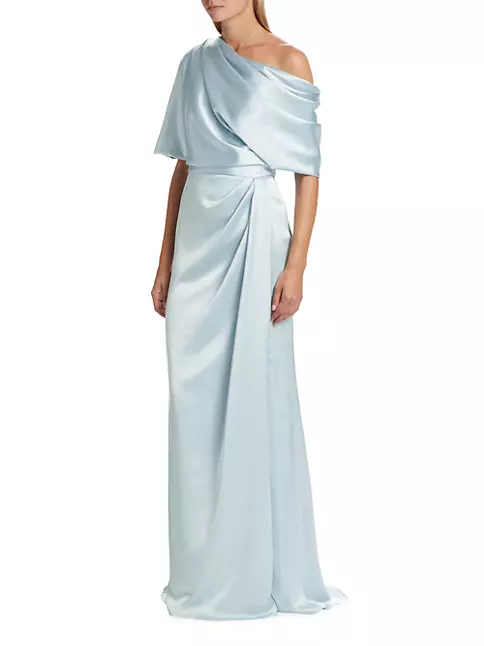
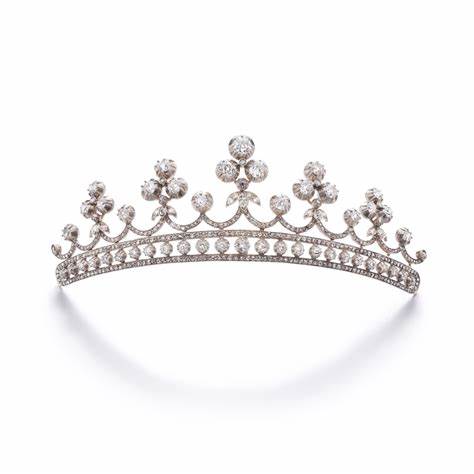
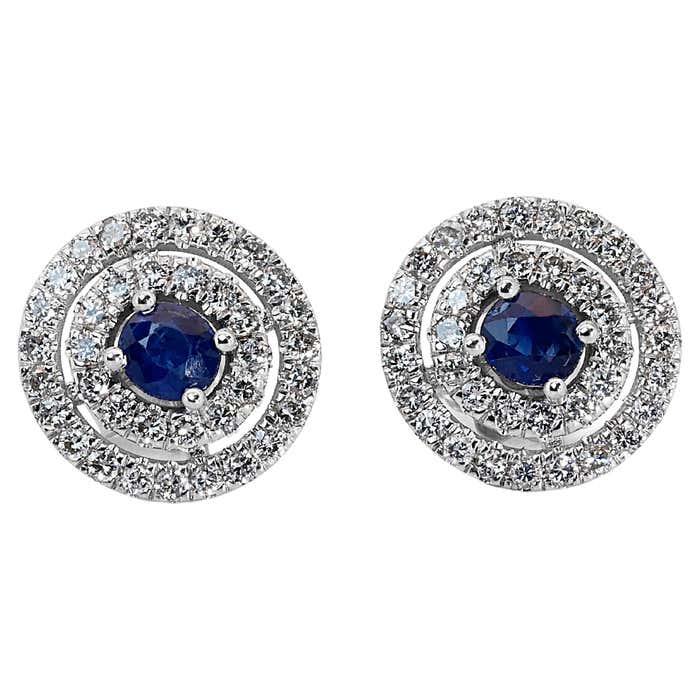
The bride's younger sister, Louise, served as her maid of honor. A magpie in the making, she managed to work around the traditional Swedish practice of 'no tiaras for the attendants' (a pox on that whole practice, I say) by wearing a gorgeous green enameled bandeau with cut amethysts (a gift from her paternal grandparents) and a pair of amethyst and pearl earrings borrowed from her maternal grandmother, the Electress of Hesse (if these earrings look familiar, it’s because we’ve covered them before! They originally belonged to Princess Elisa of Prussia, an ancestress of Anne and Louise via their mother). She wore a mint green feather and jewel embroidered capelet gown and looked absolutely gorgeous in it. I still regret the lack of a tiara, however, but she definitely delivered on the dress and what jewels she wore. If this is a taste of her style to come, I am absolutely here for it.


.jpg)
(And just so no one can say I skipped the rest of the bridal party -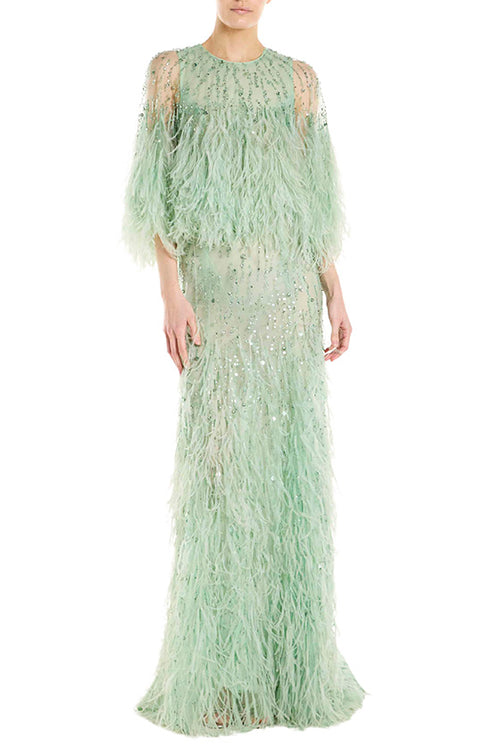
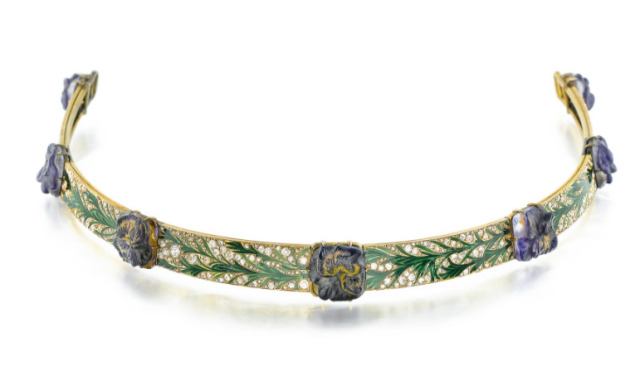
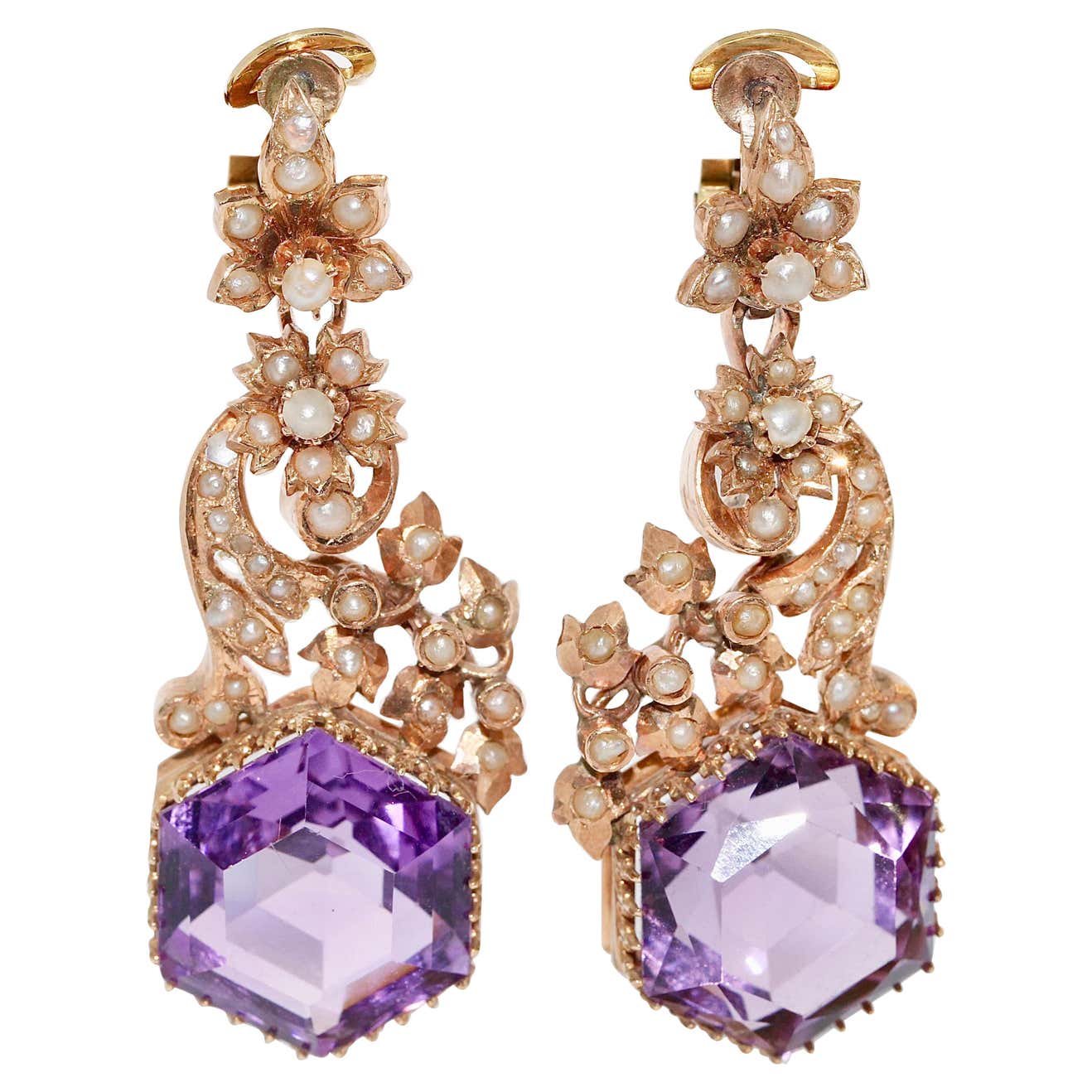
The best man was Emil von Rothstein, the groom’s best friend. He wore a Swedish military uniform. And no jewels.
The child bridesmaids were Miss Honor Bassett, Miss Nicola Bassett, Princess Charlotte of York (all cousins of the bride); Miss Sienna Craig (the bride's goddaughter); Countess Gabriella Oxenstierna (the groom's niece); and Princess Anna of Norway (the groom's goddaughter). The pageboys were Baron Axel von Buxhoeveden (the groom's step-nephew); Count Karl Oxenstierna (the groom's nephew); Prince Welf of Hanover (the groom’s nephew); and Mr. Jack Fisher (the bride's godson).
They were very cute. They wore no jewels. I am moving on.)
And now, magpies, the moment you have all been waiting for: the bride.
Anne wore an off-the-shoulder puff sleeve cream-colored ball gown that was heavily embroidered with flowers and butterflies, custom made by her friend fashion designer Elissa Craig. I am told that these are flowers and butterflies native to England, Scotland, Ireland, Malta, Australia, and Sweden, which is both clever and stunning. Her veil was the traditional lace veil of the British royal family (4 meters of handmade Irish lace detailed with the royal symbols of England, Ireland, Scotland and Wales - a totally normal family heirloom that just anyone has lying around).
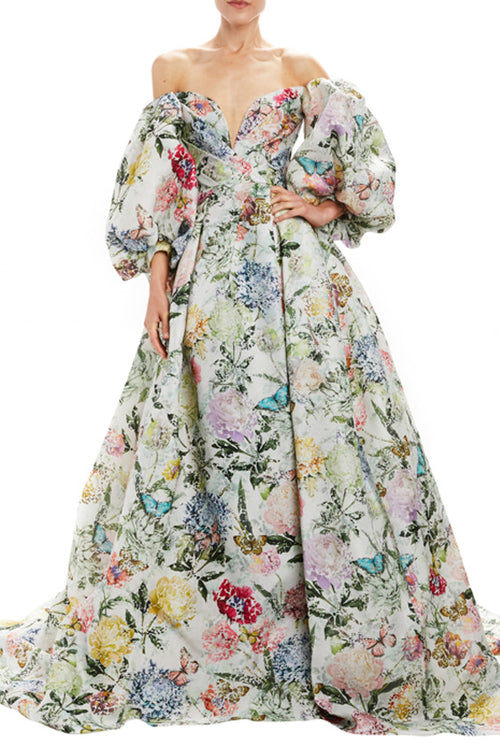
But her jewels - oh, her jewels. Romantic. Historic. Stunning. They hit all the notes.
The bride wore a turquoise and diamond parure gifted to her as a wedding present by her grandmother, Queen Alexandra. This parure was apparently specifically set aside for the bride by her paternal great-grandmother and namesake, Queen Anne (born The Hon. Anne Fitzgerald-Fitzclarence), in her will. The O.G. Queen Anne received the set as a wedding present from the Prince of Wales when they married in 1929. The groom specifically designed the tiara, earrings, necklace, and brooches for his bride, selecting turquoise because he believed that it matched the color of his bride’s eyes.
If he says he loves you but he is not custom designing a parure with jewels specifically to match your eyes, does he really love you?

(Here is a picture of the original Queen Anne wearing the parure)
Best wishes and shiny things to the happy couple! Come back tomorrow when we dissect - ahem, I mean discuss - the rest of the wedding guests!
~~~~~~~ ~~~~~~~ ~~~~~~~ ~~~~~~~ ~~~~~~~ ~~~~~~~ ~~~~~~~ ~~~~~~~“HM Erik XV Carl Johan Gustaf Micael Artur, The King of Sweden was born on July 13, 1992 in Stockholm to Crown Prince Johan Gustaf of Sweden, Duke of Skåne, and Helena Maria Lillemor de Wendel as their second child and eldest son (his two sisters are Princess Josefine, Countess Oxenstierna, and Eleonora, Princess Georg of Hanover). He was titled ‘Prince Erik of Sweden, Duke of Duke of Jämtland’ at his birth. His godparents included the Crown Prince and Princess of Norway, the Marquês de Soveral (his maternal uncle by marriage), Princess Eugenie of Sweden (his paternal aunt); the Duc de Navarre (his father’s cousin); and Olivia Severim de Noronha (a friend of his mother’s). He was raised primarily in Stockholm with his two sisters. His father died in a driving accident when Erik was seven; his mother remarried five years later.
After performing his year of military service in the Swedish navy, Erik attended Lund University, where he received a Master’s degree in Economics. He ascended to the throne when he was twenty-five, following the death of his grandfather, the King.
Erik is fluent in Swedish, German, English, and Portuguese, his mother’s first language. He is an accomplished sailor, having sailed for the Swedish Olympic team when he was twenty, and amateur photographer.”
-Excerpt from the Wikipedia page of Erik XV, The King of Sweden
HM Anne, The Queen of Sweden (born HRH Princess Anne Elizabeth Melita of Kent) was born on January 23, 1995 in Malta to Prince Richard, The Duke of Kent, the youngest son of the current King William V, and Princess Emma of Hesse. She was named for her paternal great-grandmother, whose birthday she shares; her maternal grandmother; and for the place of her birth. She is known to intimates as ‘Melita’. Her godparents were the Queen of Greece (a paternal cousin), the Prince of Wales (her paternal uncle), the Hereditary Elector of Hesse (her maternal uncle), and Grand Duchess Yelizaveta Aleksandrovna of Russia (a maternal cousin).
The eldest of her parents’ two daughters, Anne was raised between Malta, Canberra, Sydney, and London due to her father’s naval career and repeated terms as the Governor-General of Australia. She attended the University of Melbourne where she received a bachelor’s degree with honors in Plant Sciences before transferring to the University of Manchester, where she earned a doctorate in Plant Sciences. Anne is known for her interests in sailing, gardening, and animal rescues, having been a founding member of the Melbourne Animal Aide Society (MAAS). She and the King currently have four dogs - two rescued greyhounds named Rocket and Flash, a rescued terrier mix named Ragnar, and a rescued small mutt named Thorvald.
Erik and Anne met in 2019 at the Match Cup Sweden tournament in Marstrand, having been introduced by mutual friends, and became engaged in 2022 - the King proposed with an Australian opal engagement ring. They were married in Stockholm on October 26, 2023. The bride wore a custom-made Elissa Craig wedding gown and the Queen Anne Turqoiuse Parure.”
-Excerpt from the Wikipedia page of Queen Anne of Sweden~~~~~~~ ~~~~~~~ ~~~~~~~ ~~~~~~~ ~~~~~~~ ~~~~~~~ ~~~~~~~ ~~~~~~~~~~~~~~ ~~~~~~~ ~~~~~~~ ~~~~~~~ ~~~~~~~ ~~~~~~~ ~~~~~~~ ~~~~~~~~~~~~~~ ~~~
Hope you guys enjoyed this! Once again, I will do my best to get an update out ASAP! Love you guys!

Drina herself will later record this instance as one “which devastated my faith in any love my aunt had for me - what cruelty to deny so ill a child her own loving mother” (this statement will later become painfully ironic to Drina’s own children).
The more with learn about Drina the curiouser I get about what kind of woman she grows up to be.The Sussexes do their best for young Drina, who will remember them fondly for the rest of her life. In truth, they will eventually become the only members of the British royal family that Drina has any fond feelings for [1]. The whole event, however, firmly increases Drina’s fear of abandonment and firm belief that illness is the precursor to exile.
Shakespear?[5] Any guesses where all of their names come from?
WELCOME BACK! LOVED IT!Obviously this did not get past the first three months of 1834, but I had been stuck on this for so long I finally gave in and decided to post what I had and start fresh (in late March, early April) in the next post.
Thank you for my third Turtledove nomination and for years (eek!) of loyalty to this thread - you guys and your kindness and support have saved my sanity a thousand times over, and there are not words for what this community means to me.
Well, she certainly won't be boringThe more with learn about Drina the curiouser I get about what kind of woman she grows up to be.
Yep! Specifically women in Shakespeare who were betrayed or forsakenShakespear?
it will be one juicy mess! Glad albert will be far away from itWell, she certainly won't be boring